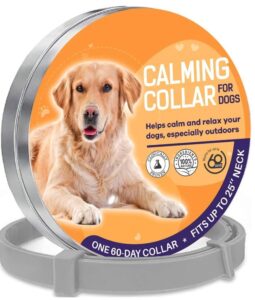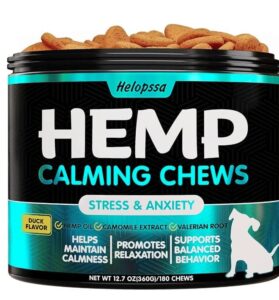At our dedicated pet-centered platform, we understand the deep bond you share with your furry companions.
Dogs, being loyal members of our families, can experience anxiety just like humans. In this guide, we’ll delve into the various facets of dog anxiety, its causes, signs, and proven strategies to help your beloved canine friend lead a happier, calmer life.
Dog Anxiety: Table of Contents
What is Dog Anxiety?
Dog anxiety is a common emotional condition that can affect your dog’s behavior, health, and overall well-being.
Every dog is unique, and their anxiety triggers may differ. From separation anxiety to noise phobia, there are several types of anxiety that your dog might experience.
What are the symptoms of anxiety in dogs?
Recognizing the signs of anxiety is crucial for early intervention. Some common signs of dog anxiety include:
1. Restlessness and Pacing
If you notice your dog constantly pacing around the house or unable to settle down, it might be a sign of anxiety.
2. Excessive Barking or Whining
Anxiety can lead to increased vocalization. If your dog is barking or whining more than usual, it could be due to anxiety.
3. Destructive Behavior
Chewed furniture, scratched doors, and torn belongings might indicate your dog’s attempts to cope with anxiety.
4. Avoidance Behavior
Dogs with anxiety might avoid certain places or people they associate with stress.
5. Changes in Appetite
Anxiety can lead to changes in eating habits – from overeating to loss of appetite.
6. Drooling and panting
These behaviors can be their way of coping with stress or nervousness.
7. Urination and defecation in the house
Anxiety in dogs can lead to accidents indoors, even if they’re already potty-trained. When dogs are anxious, their normal bathroom habits can be disrupted. This is often due to the stress they’re feeling.
8. Fear and panic
signs of fear include:
- trembling,
- tail-tucking,
- hiding,
- reduced activity
- injuries
- diarrhea
- Lesions secondary to licking and biting their own body
- Tail-chasing and circling
- panting
What Causes Dog Anxiety?
Understanding the underlying causes of your dog’s anxiety is the first step toward effective management. Some common triggers include:
1. Separation
Dogs are pack animals, and being left alone can trigger separation anxiety.
2. Loud Noises
Thunderstorms, fireworks, and other loud noises can induce anxiety in dogs.
3. Traumatic Experiences
Past traumatic experiences, such as accidents or abuse, can contribute to long-lasting anxiety.
4. Changes in Routine
Dogs thrive on routine. Sudden changes, like a move or a new family member, can cause anxiety.
5. Medical Conditions
Certain medical conditions, like thyroid imbalances, can also lead to anxiety in dogs.
Effective Strategies for Alleviating Dog Anxiety
1. Create a Safe Space
Designate a comfortable, quiet space where your dog can retreat during times of stress.
Consider buying anti anxiety dog bed and placing it in a quiet space. These beds come with calming features.
2. Gradual Desensitization
Expose your dog to anxiety triggers in a controlled manner, helping them build resilience over time.
For example, my dog was scared of plastic bags when she was a pup. So, I let her smell the bag, touch it and eventually play with it.
3. Positive Reinforcement
Reward calm behavior with treats, toys, and affection to reinforce positive associations.
4. Consider dog-calming products
Dog-calming collars

These collars are external and easily removable options for anxious dogs.
I like the EnerCal calling collar because it contains natural ingredients.
You can browse this or similar collars here.
I would advise to remove the collar when your dog is not anxious. The aromas might be overwhelming for their strong sense of smell. So use it in stressful situations.
Weighted Dog Blankets

These blankets are a fantastic option for anxious dogs. The weight or these blankets provides a sense of safety and calm.
You can find weighted blankets here.
Calming dog treats
Ingredients that help with anxiety include:
Hemp
Valeriana
Camomile
Helpossa’s calming chews are duck flavoured and my dogs really like them.

You can browse this or similar treats here.
4. Professional Support
Consult with a veterinarian or animal behaviorist who can provide tailored guidance and, if necessary, medication.
5. Engage in Physical and Mental Stimulation
Regular exercise and brain-teasing activities can divert your dog’s focus and reduce anxiety.
Vet assistance and medications for dog anxiety
When anxiety persists, your veterinarian might consider the use of medications like SSRIs (Selective Serotonin Reuptake Inhibitors) and antidepressants (fluoxetine and clomipramine)
For stress triggers such as thunderstorms, fireworks, or car rides, a combination approach could come into play. This could involve prescribing benzodiazepines alongside antidepressants, working in tandem to provide comprehensive support during times of heightened stress.
Senior dogs navigating cognitive dysfunction syndrome (CDS) could find relief through the application of the medication selegiline.
This particular drug has shown potential in mitigating specific symptoms associated with CDS, offering respite to both the furry companion and concerned caregivers.
Every dog’s journey is unique, and the expertise of a veterinarian is crucial in determining the most fitting strategy to alleviate your loyal companion’s anxiety-related tribulations.
My Senior Paws is a participant in the Amazon Services LLC Associates Program, an affiliate advertising program designed to provide a means for sites to earn advertising fees by advertising and linking to Amazon.com. We also participate in other affiliate programs which compensate us for referring traffic.




